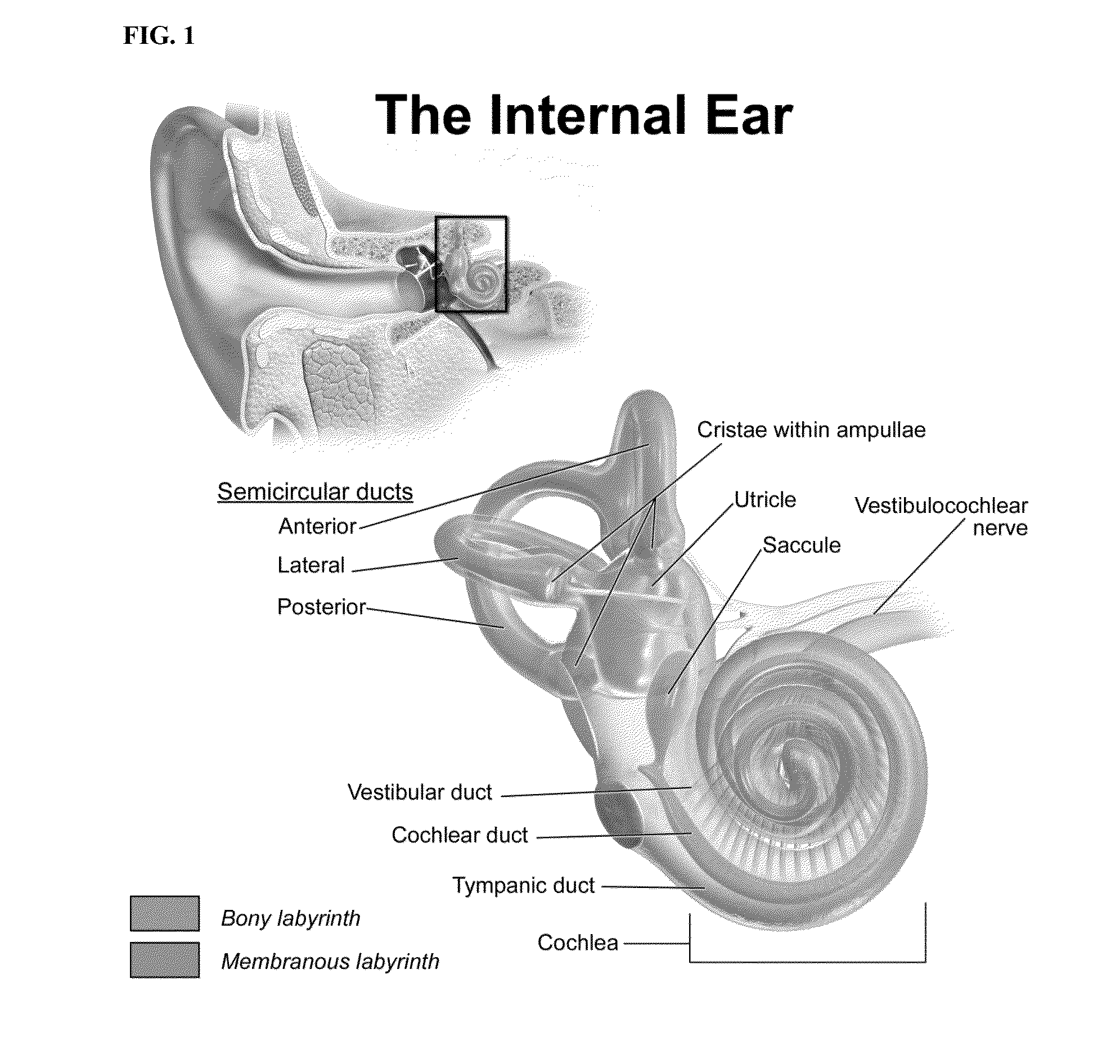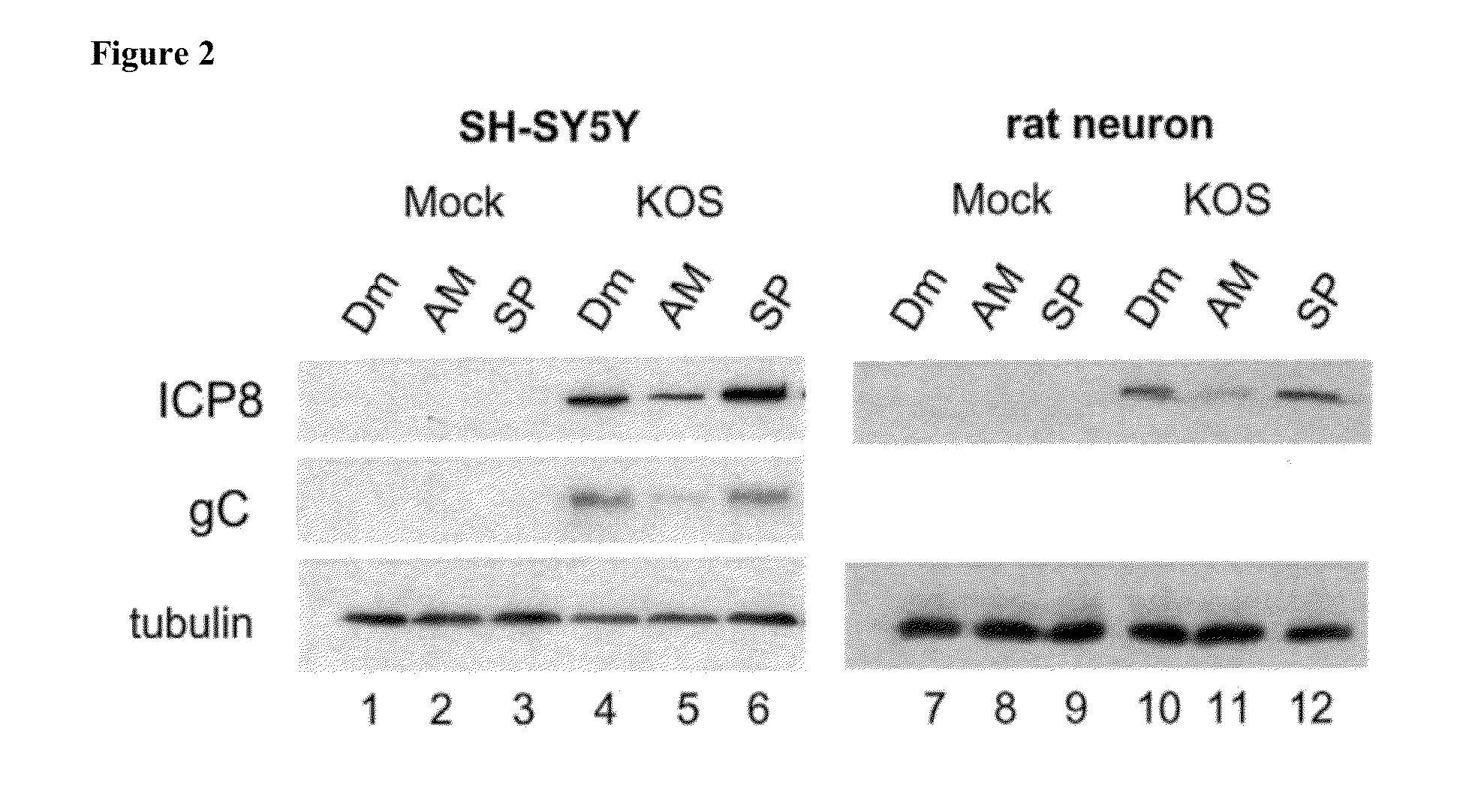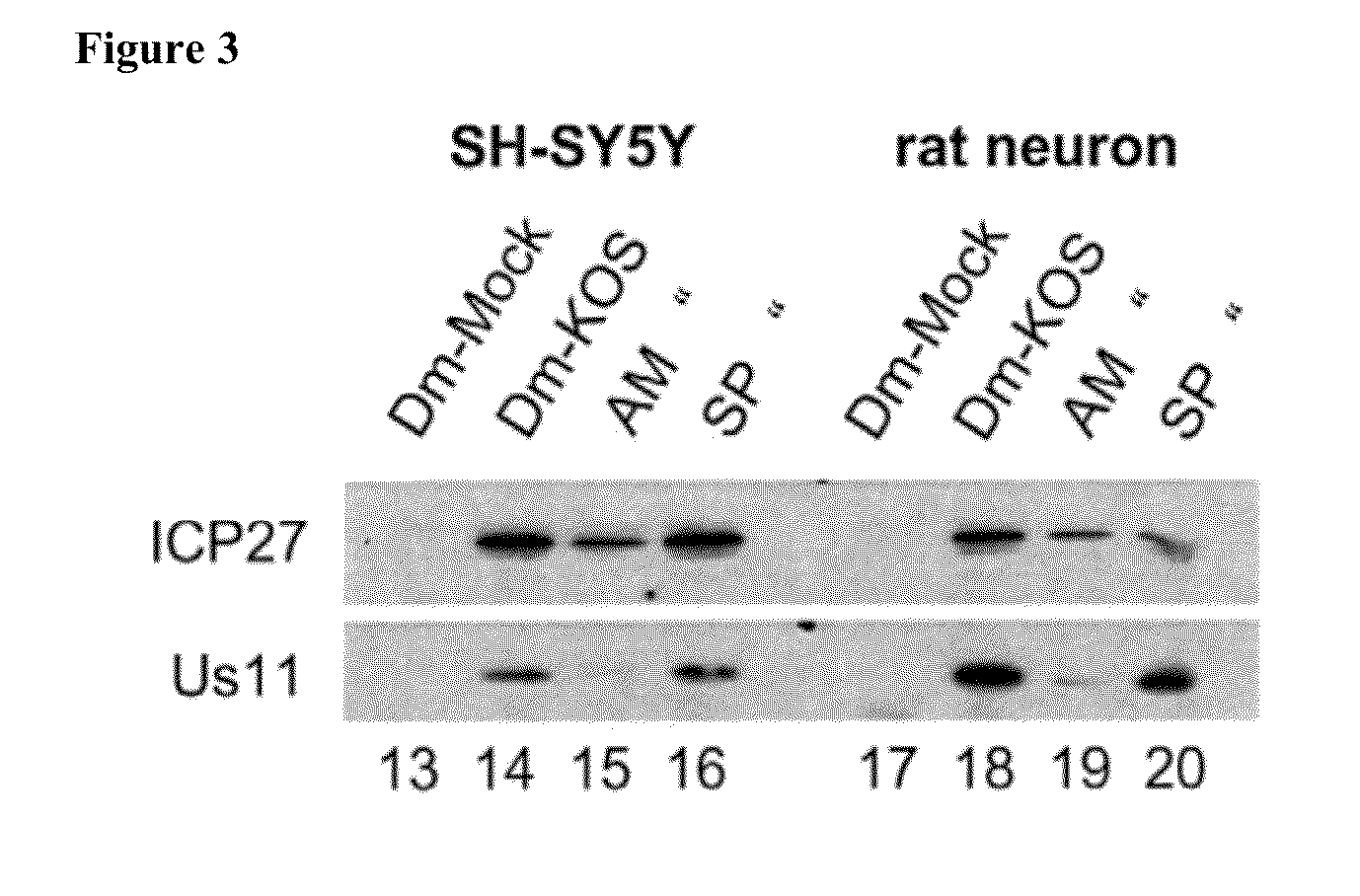Pharmacologic treatments of meniére's disease
a meniere's disease and ear technology, applied in the field of meniere's disease pharmaceutical treatment, can solve the problems of affecting the quality of life of meniere's patients, unable to perform normal daily living activities, and the most debilitating symptoms of vertigo, so as to achieve the effect of attenuating one or more symptoms and long-term outcomes
- Summary
- Abstract
- Description
- Claims
- Application Information
AI Technical Summary
Benefits of technology
Problems solved by technology
Method used
Image
Examples
example 1
[0148]In the absence of a relevant and reliable animal model, the intracellular JNK inhibitor D-JNKI-1 (SEQ ID NO: 2) has not been tested for the treatment of viral infection in the inner ear so far. Modulation of JNK and / or p38 MAPK pathways is required for infection and replication of HSV-1, Epstein-Barr virus or VZV (Wei et al., 2009). Beckham et al., 2007 showed that reovirus infection results in activation of JNK and caspase-3 in the central nervous system (CNS). Treatment of reovirus-infected mice with D-JNKI-1 resulted in significantly prolonged survival of intracerebrally infected mice following an otherwise lethal challenge with T3D (100×50% lethal dose). Protection correlated with reduced CNS injury, reduced neuronal apoptosis, and reduced c-Jun activation without altering the viral titer or viral antigen distribution. As we demonstrate in cell assays below, application of D-JNKI-1 and to a lesser extent also the small molecule JNK inhibitor SP600125 reduced HSV yield and ...
example 2
[0156]The ability of JNK inhibitors to affect accumulation of viral proteins representative of the immediate-early (IE), early (E) or late (L) kinetic classes was evaluated by a Western blot assay.
Materials and Methods
[0157]Unless indicated otherwise, the same materials and methods were applied as for the experiment described under Example 1 and as laid out by Hargett et al., 2005.
Replicate monolayers of rat fetal cortex neurons or ATRA-differentiated SH-SY5Y cells were pre-treated with DMSO, D-JNKI-1 (10 μM) or SP100625 (40 μM) for 30 minutes, and then infected with wild type HSV-1 (KOS) or ICP27 null mutant d27 at a multiplicity of infection (MOI) of 5, or mock-infected under pre-treatment conditions for 60 minutes. The inoculum was removed and incubation continued under the pretreatment conditions until the time of harvest. Whole cell lysates were prepared at 8 h post infection. Aliquots of lysates were separated on 12% gels by standard polyacrylamide gel electrophoresis (SDS-PAG...
example 3
[0159]An in vivo study with fluorescence labeled D-JNKI-1 was conducted to evaluate whether the compound could reach the cochlear apex and the vestibular system following a single dose round window membrane application.
Materials and Methods
[0160]FITC-labeled D-JNKI-1 (NeoMPS, Strasbourg, France) was prepared in an isotonic NaCl solution at a concentration of 0.1 mM. Two groups of 3 adult chinchillas each were anesthetized (ketamine 40-60 mg / kg plus acepromazine 1-2 mg / kg; supplementary half doses as needed), and the middle ear space was opened using an inferior-posterior auricular approach to expose the round window membrane. A 100 μL syringe attached to a 30 gauge needle was used to deliver 30 μL of the test solution to the round window membrane. After applying the test solution, the head of the animal was maintained in a stable orientation for 30-40 minutes so that the solution remained on the round window.
Animals were sacrificed 1 or 3 hours after administration of the test solut...
PUM
| Property | Measurement | Unit |
|---|---|---|
| time | aaaaa | aaaaa |
| volume | aaaaa | aaaaa |
| volume | aaaaa | aaaaa |
Abstract
Description
Claims
Application Information
 Login to View More
Login to View More - R&D
- Intellectual Property
- Life Sciences
- Materials
- Tech Scout
- Unparalleled Data Quality
- Higher Quality Content
- 60% Fewer Hallucinations
Browse by: Latest US Patents, China's latest patents, Technical Efficacy Thesaurus, Application Domain, Technology Topic, Popular Technical Reports.
© 2025 PatSnap. All rights reserved.Legal|Privacy policy|Modern Slavery Act Transparency Statement|Sitemap|About US| Contact US: help@patsnap.com



